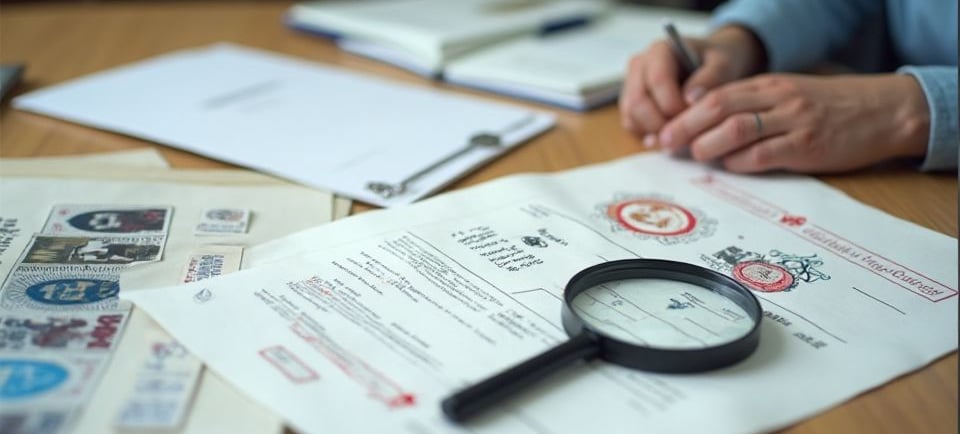6. Step-by-Step Guide: How Embassies Verify Your Documents Before Jobs Abroad
Learn how embassies verify educational, professional, and personal documents for overseas jobs. Step-by-step process explained to help applicants avoid rejection.
ABROAD JOB APPLICATIONS
Viral Gala
9/25/20252 min read


Your Passport to a New Career: A Peek Inside the Embassy's Document Checklist 🕵️
You've landed the job offer. You've packed your bags in your mind. Now comes the moment that feels like the biggest hurdle: Embassy Document Verification.
This is where the embassy decides if your papers are genuine enough to trust your future to. It's not about being suspicious; it's about making sure your hard-earned qualifications are real—a small but critical step that protects both you and your future employer.
Here’s a step-by-step breakdown of exactly how embassies verify your documents, and why a simple mistake like lamination can stop your dream job cold.
The Embassy Verification Journey: 5 Steps to Your Approval Stamp
Think of this process as a high-stakes security check. The embassy needs total certainty before they grant that final visa stamp
1. The Critical First Submission: Originals Only, Please! 📄
When you submit your file, the embassy is looking for original documents: your degree, your mark sheets, your work letters, and ID proofs.
The Lamination Rule: This is where the first hurdle appears. If your documents are laminated, they are often rejected immediately. Why? Because the plastic prevents them from seeing and feeling the paper's genuine security features. You simply cannot stamp, sign, or authenticate plastic.
2. The Local Gatekeepers: Notaries & Home Departments 🏛️
Before your papers even reach the final embassy official, they often have to pass a local check. You might be asked to get your documents attested by a:
Notary Public: The first level of authentication.
State Home Department: A confirmation from the local government that your personal records are in order.
This step ensures the paperwork is genuine before the international verification begins, saving everyone time.
3. Deep Dive: Going Back to the Source 📞
This is the main event. Embassy officials don't just trust your papers; they trust the institutions that issued them. They will initiate a direct cross-check:
For your Education: They contact your University or Board to confirm your degree and marks are legitimate.
For your Experience: They reach out to your previous Employers to verify the dates and roles listed on your experience letter.
If the details don't match or the institution doesn't respond, your application gets flagged.
4. The Digital Fact-Check: National Databases 💻
In an age of digital records, some embassies use modern technology to compare your submitted data against national and government databases. They check for consistency across official records. If your name, father's name, or date of birth shows a mismatch between your documents and the database, it requires immediate clarification.
5. The Final Approval: The Stamp of Trust ✔️
Once all checks are complete, and the embassy is satisfied your documents are 100% genuine and unaltered, they apply their final seal, stamp, or certificate of authentication (the Apostille or Attestation). This stamp is your final clearance—it's the green light for your job visa, higher studies, or permanent residency.
Your Biggest Mistake and How to Fix It
The most common reason for delay? Laminated Documents.
Lamination hides crucial watermarks, seals, and security threads.
It prevents the necessary stamping and official signing needed for final verification.
It raises suspicion of tampering because it's impossible to verify the paper underneath.
The Solution: If your certificates are laminated, you must use a professional service that guarantees safe, damage-free removal before you submit anything. Don't risk your job offer or visa on a piece of plastic. Get your documents Embassy Ready today!
